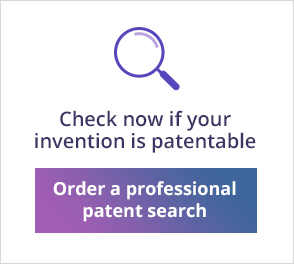
In this article we will discuss ways to put an idea into production and especially how to patent an idea in order to get a good strong Intellectual property protection.
How to put an idea into production – Main stages in transforming an idea into a patent protected product
There are several stages in the process of developing an idea into a product, getting a patent on the idea and eventually put the idea into production:
Stage 1: Research & documentation
Do your homework – Fully research and understand all the aspects of the process answering questions such as:
- Technical – What is the current technology in the field, what kind of technology do I need to put my idea into production etc.
- Business & commercial – Does my invention exist? Market research – Who are my clients? Who are my competitors, Where are my markets etc.
- Legal – What Kind of intellectual protection do I need (a patent, design, trade mark etc), what is the scope of protection each right gives, what makes an invention patentable, how long does it take to patent an invention, how to patent an idea etc.
During that process it is very important to document each and every step in order to help professionals (patent searchers, patent attorneys, IP consultants, engineers etc.) in assisting you to patent the idea, develop it into a product and finally put the idea into production and then bring it to the market.
Stage 2: Patent search
Option one – The research found no relevant publications resembling the invention
If during the research stage you didn’t find anything that is even remotely close to the idea it is recommended to conduct a patentability search by a patent search company.
Remember – Novelty is the first prerequisite that makes an invention patentable! just because you haven’t found the invention/ idea anywhere in the real world or on online free databases (google, google patents, USPTO etc.) does not necessarily mean it isn’t out there – In the form of a publication in a nish scientifical magazine or an old foreign patent that can be found only via professionals paid databases (orbit, patbase etc.).
Before rushing with putting an idea into production by spending time and money to involve a patent attorney/ agent to draft and file costly patent applications in multiple countries and pay engineers to develop the idea into a product, you should first turn to a patent search company who will use professional paid databases and expert patent searchers.
Option two – The research found relevant publication resembling the invention
If you find identical or even similar publications of your invention (a product, patent, patent application etc.) It is important to consult with an expert (IP consultant, patent agent/ attorney etc.) on the question whether you can get a patent on the idea.
You should keep in mind that one of the basic conditions that makes an invention patentable is non-obviousness – If your idea differs only in a small way from existing solutions in products or in patents you won’t be able to get patent protection.
If there are existing products and you still want to proceed in developing the idea and putting it into production (with or without a patent) it is recommended to conduct a freedom to operate search, in order to make sure there are no granted patents that you infringe and that might prohibit you from producing your product.
Stage 3: Develop an IP strategy
Based on the patent search report it is time to develop an IP strategy (together with your patent attorney/ agent/ IP consultant).
Intellectual property (IP – patents, designs, trademarks etc) is a business and commercial asset just like any other. The IP strategy purpose is to construct a plan that drawis the best and most suited way to get IP protection (for example getting a patent on an idea, trademark, design rights etc), and then manage and monetize a single or multiple IP assets.
A solid IP strategy must help the inventor or entrepreneur answer important questions (like the one mentioned above) for example – can you get a patent on the idea or other IP protection? What type of IP protection is needed (patents, designs, trademarks etc)? What is the optimal way to get protection? What are my business and commercial goals? (put the idea into production? Sell rights and licenses or sell the patent itself)? Where are my markets (In What countries or areas do I need to get a patent)? etc.
Stage 4: Choosing the IP path, drafting and filing a patent
After conducting a patentability search and ensuring that your idea is complying with all the conditions that make an invention patentable, and then creating an IP strategy it is time to proceed.
First you must remember the patent right protection scope:
- A patent is granted for 20 years
- A patent protection is tretorial – you must patent an idea separately in each and every country you want to receive exclusivity on the invention!
The first step is to decide with your patent attorney/ agent at what countries you want to to have a granted patent, and via what route/mechanism (National filing-filings, PCT application, EP filing, US provisional etc.)
Next your patent attorney/ agent will draft a patent application describing the invention and file the application in the chosen authorities/offices according to the selected IP mechanism (National filing-filings, PCT application, EP filing, US provisional etc.)
Many patent applications are rejected and not approved. Even the applications that do make it and become approved patents are subject to a long process of rejection and appealing. How long does it take to patent an invention? In case of a patent filed in multiple countries – It can take years.
Stage 5: The building phase – develop a product and make a business plan
After receiving the patent grant it is time to decide whether you want to monetize your patent by simply selling it or using it to build a business. If you decide upon the later it is time to build:
- Transformation of the idea into a tangible product by building a prototype – and then a full product
- Build a business plan that will help you put the idea into production and bring the new product to market
A good business plan helps you identify the quickest and clearest path to profit from your product.
Stage 6: Manufacture market & sell
Time to build your business according to the business plan and start manufacturing, marketing and selling.
Good luck

